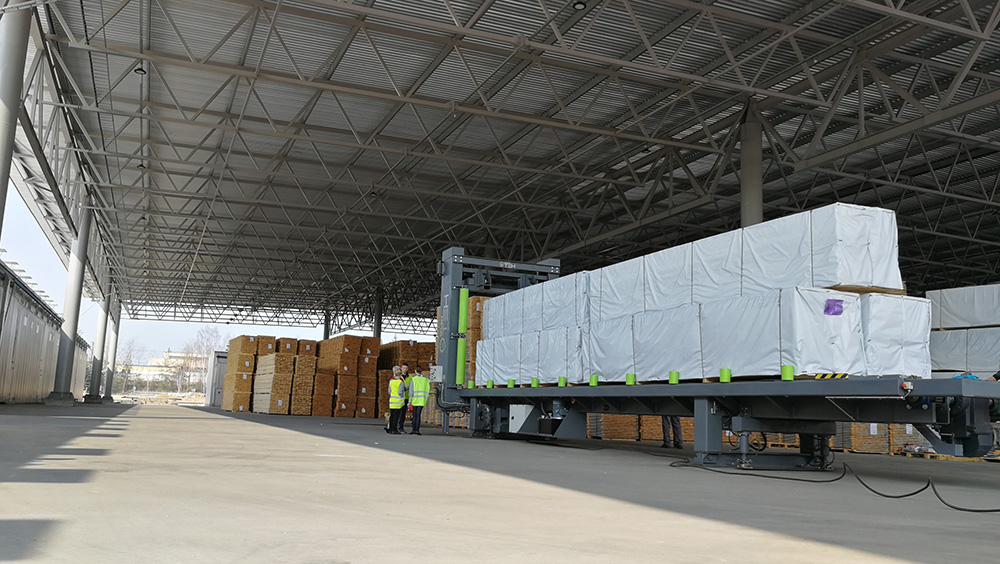12 Ways to Prevent Cargo Damage in Supply Chain

The supply chain is a vital part of your business, therefore an essential component to ensure the arrival of the product in good condition to the customer's hands. Ensuring that the product arrives without damage is necessary to satisfy any customer, as well as saving costs and avoiding rework loops, while allowing your business to grow in the short, medium and long term. The following are 12 tips to prevent cargo damage in your Supply Chain.
1. Shipment damage prevention starts with adequate packaging practices
This is the first and most important point to prevent shipment damage. Considering the fact that packaging costs are a minimal percentage of the overall supply chain expenses, the proper packaging practices will reduce the total overhead costs. Choose the correct packaging and correct size.
Avoid excess slack, as well as compression, in addition to maintaining protection against impacts. The packaging must be kept free of any damage, without holes, corner damages, punctures, tears, dents, bumps or water damage. Maintain the maximum weight stipulated in the packaging. Fill the empty spaces inside the packaging with filling materials, such as foam or bubble plastic. Use strong spill-resistant adhesive tape and make use of proper sealing techniques.
2. Adopt adequate palletizing techniques
Standardize the dimensions of your packages and pair packages with the correct pallet size, avoiding packaging being outside the pallet borders, or empty spaces between packages. Use corner posts and wrap with stretch film to ensure that each handling unit remains stationary. The amount of wrapping and proper tension is important for securing products on pallets. Lay boxes like bricks and avoid “pyramids” on top. A regular check and rotation of pallets is essential to maintaining a stock of useable pallets. Heavy and bulky products require a stable strapping solution that can reliably secure heavy loads.
3. Avoid extra-handling and reduce manpower resources by appropriate labelling
Labels help shippers make decisions during the shipping process. A label should indicate the content’s ability to withstand added weight. Include the amount of weight the box or package can withstand before being crushed and an indicator of fragile contents. Properly label each pallet, with concise and visible information, easy to identify and free of damage.
4. Improve your loading practices
Stacking should be uniform and stable. The weight should be evenly distributed on the pallets and the height of the pallets uniform. The lightest load must be stacked on the heaviest load.
Step-wise documentation, established processes and procedures are of the utmost importance when it comes to freight loading. Avoid double stacking cartons or pallets, use a cushion to avoid product damage due to swings and utilize proper dunnage to fill up any gaps, to protect the goods from shifting.
5. Include an effective containerization process
In essence, a container is a package that allows the storage and transport of goods without the danger of crashing due to its strength and facilitates its handling to transporters, using the appropriate machinery.
Distribute the load evenly on the ground, without empty spaces and correctly locate the centre of gravity inside the container. Ensure that the containers are clean and free of previous transport residues. SmartTEH offers suitable systems to ensure the maximum weight allowed in each container is respected.
Use longitudinal and/or transversal lashings if necessary, avoiding empty spaces. Maintain prudential space without loading pressure on the doors to avoid the risk of falling merchandise when the container is opened.
6. Prevent container rain and sweat
Preventing is cheaper than fixing the damage. Ensure proper ventilation; use the right type of pallets and desiccants to maintain the state of dryness in containers.
7. Warehouse conditions as a key factor to reduce cargo damages
A logical warehouse layout is the first step towards smarter working. Ensure also that cross docks and warehouses have uncluttered clean aisles so man labor and equipment can manoeuvre easily. Improve your warehouse space availability, prevent goods damages and load /unload trucks faster using the right system.
8. Adequate material-handling equipment
Use equipment that adapts well to the situation; the speed and the effectiveness will be increased and good damage, as well as accidents, can be greatly reduced. Make sure all of your material-handling equipment (conveyors, loading/unloading systems, cranes, forklifts, strapping machines, pallet jacks, trucks, etc.) are in working condition.
9. Improve your handling practices
Poor judgment, work ethic, lack of training and a high-pressure environment to produce more are some of the reasons that force employees to mishandle packages and cause products damage. Employees must be adequately trained in the safe use of the equipment in the workplace; for example, forklift operators should understand the weight restrictions when picking up heavy loads. Keep your employees trained with a solid training plan that allows you to guarantee maximum productivity and minimum accidents and goods damages.
10. Associate with a correct 3PL operator
According to Eurostat about freight damage statistics, three-quarters of total inland freight transport in the EU is by road. (Source: https://ec.europa.eu/eurostat/statistics-explained/index.php?title=File:Inland_freight_transport,_2016.png).
Outsourcing the logistics management to a 3PL company will contribute to improving your efficiency, reduce the damage during transportation, let your company focus on the core of your business and finally contribute to get a higher service level and Return on Investment (ROI).
Consider not only the goods transport cost but also its safety. Increase the packaging strength when considering Less than Truck Load shipments (LTL), in which more manipulation takes place.
11. Plan your supply chain
Create, document and maintain a plan to reduce product damage and improve indicators that ensure the correct arrival of the merchandise to your customer, from the design of packaging to the methods of consolidation and selection of the appropriate transport modalities.
12. Build and sustain a continuous improvement culture.
Continuous Improvement is an ongoing process of looking for improvements in every area of the supply chain process. SmartTEH allows organizations to identify and eliminate waste activities that do not add value to the customer, through an automatic container loading system.

Automatic Container Loading System
Your turn
Cargo damage prevention is an important aspect of your supply chain. Working closely with all parties involved in your logistics is integral to ensuring your product will be on time, on budget, which will help your business grow and provide a better service level and customer satisfaction.






